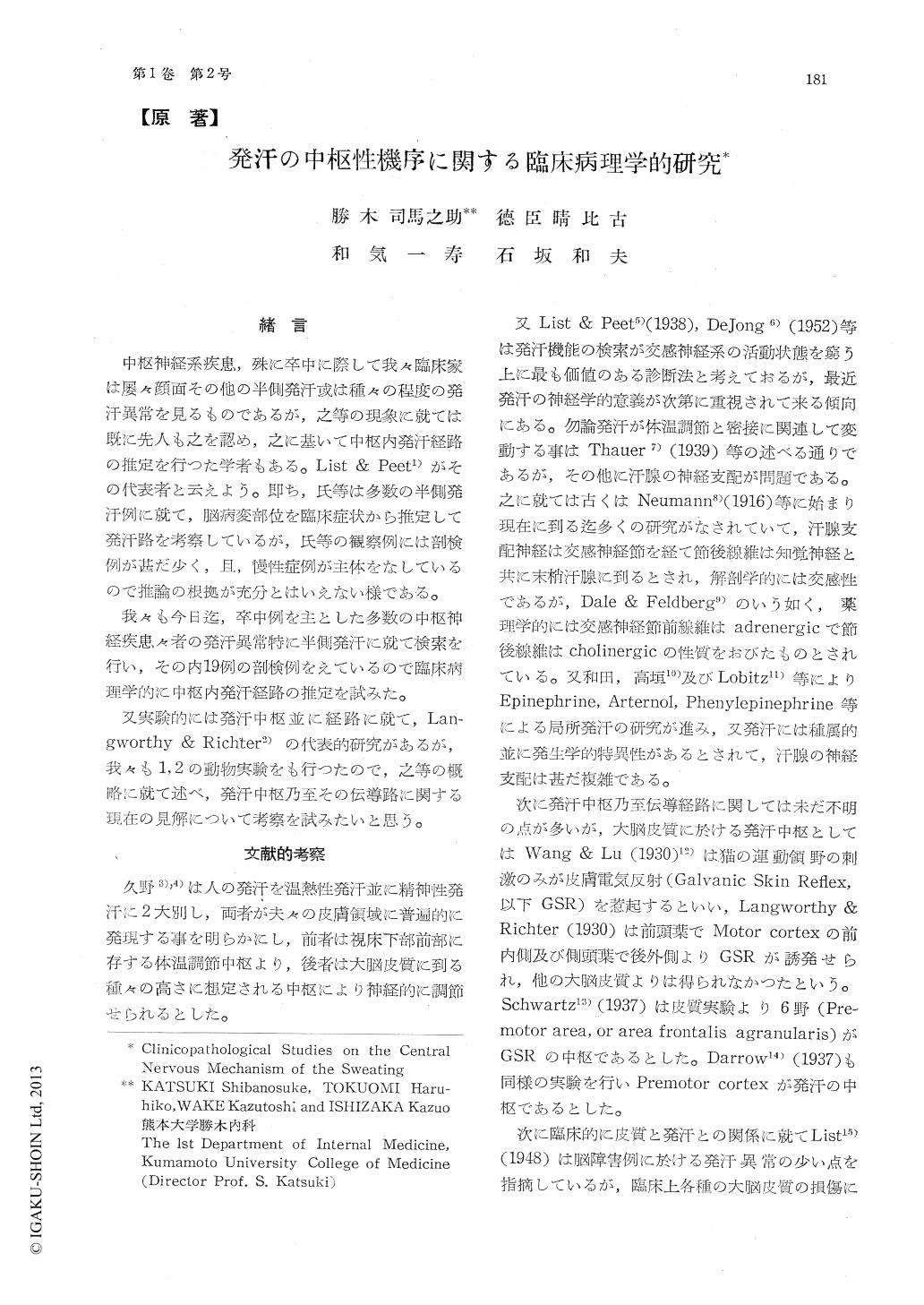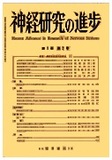Japanese
English
- 有料閲覧
- Abstract 文献概要
- 1ページ目 Look Inside
緒言
中枢神経系疾患,殊に卒中に際して我々臨床家は屡々顔面その他の半側発汗或は種々の程度の発汗異常を見るものであるが,之等の現象に就ては既に先人も之を認め,之に基いて中枢内発汗経路の推定を行つた学者もある。List & Peet1)がその代表者と云えよう。即ち,氏等は多数の半側発汗例に就て,脳病変部位を臨床症状から推定して発汗路を老察しているが,氏等の観察例には剖検例が甚だ少く,且,慢性症例が主体をなしているので推論の根拠が充分とはいえない様である。
我々も今日迄,卒中例を主とした多数の中枢神経疾患々者の発汗異常特に半側発汗に就て検索を行い,その内19例の剖検例をえているので臨床病理学的に中枢内発汗経路の推定を試みた。
Sweating disturbances due to the central nervous disorders were observed in 55 patients with various lesions of the brain, namely cerebral hemorrhage, cerebral softening, cerebral tumor etc. In 19 cases of them, the locations of the lesions were confirmed at autopsy, and the relations between the sweat disturbanceand the cerebral location of the lesion were discussed clinicopathologically. The excitation of sweat gland activity was observed by means of Minor's method and electrical skin resistance method and found its increased activity on the half side of the body, particularly on the hemiparalyzed side, that is, at the half of the body opposite to the cerebral lesion, in 31 of 55 cases. The cerebral lesion in 19 hemisweating cases located in various sites of the brain and extended from cerebral cortex medulla oblongata.
Juding from the pathologic anatomical findings, it was suggested that the central sweat pathway originating in the motor area of the cortex crosses to the opposite side below the distal end of the pons, and runs to the contralateral skin area. These contralateral sweat excitations may be explained as an increased automatism which is accompanied with the motor disorders. Moreover, it was thought that the hypothalamus, midbrain and tegme .Mum of the pons, may also influence the sweating of central origin. The mechanism of the increeased contralateral sweat gland activity in patients of cerebral lesions, can be presumed to be caused mainly by release from the inhibitory influence from the centers of higher orders.

Copyright © 1956, Igaku-Shoin Ltd. All rights reserved.


